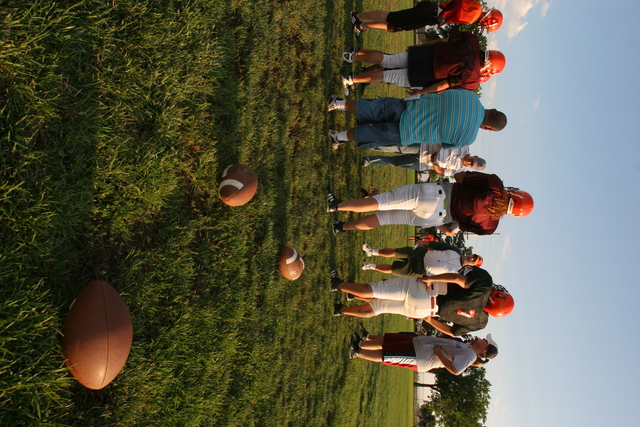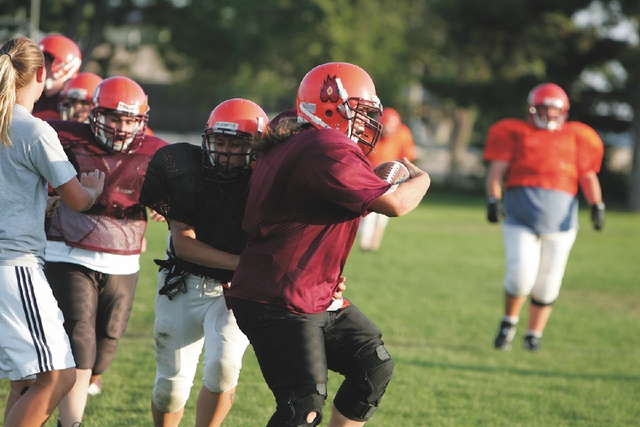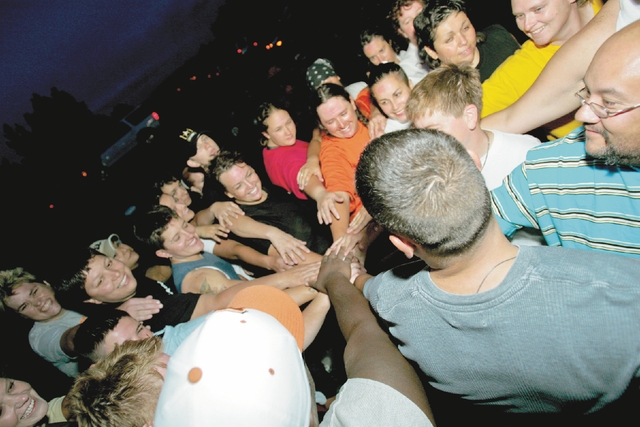Feature
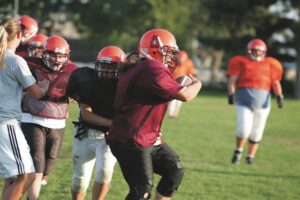 Bertha Rivera runs back a kick.
Xavier Mascareñas
Bertha Rivera runs back a kick.
Xavier Mascareñas
Beat, But Not Defeated
They haven’t won a game yet. That’s the thing that’s plaguing the Burn, a perfectly named team that practices for hours every week in the heat and altitude of New Mexico. "One, two, three" calls a player as they stretch at the beginning of practice. "Burn!" the team answers. And they burn, fierce as ever, but that cranky two-season losing streak hangs over every player, aching in their trick knees and sore backs, sacrifices to a sport that still hasn’t rewarded them with anything but a 0 in the “W” column. Most of the line has had one, if not two, knee surgeries, and still they’ve returned for another season. But that ugly 0 grows heavier from game to game, season to season, says team owner and second-string quarterback Christie Moses. And the 0 was still in place after the Burn’s 2007 season opener against the Los Angeles Amazons. On Saturday, Aug. 18, the Burn suffered a huge defeat, 64-0, and racked up some serious injuries on an already understaffed team. Offensive lineman Melissa Lucero broke a rib; wingback Joslyn Gutierrez broke a collarbone; and cornerback Brenda Kuligowski probably sprained her MCL. “Everybody’s disappointed in the score,” Moses says. “We’re just trying to pick each other back up and get ready for Saturday.” The Burn faces the Houston Energy on Aug. 25 at Wilson Stadium. “You go out there, and you’re fired up. You start the game and think, ‘We’re going to win this game. We have this chance.’ Then things start going the wrong way,” says Moses. “They start scoring. You start throwing interceptions and fumbling the ball, and it just … you can see it in the team. You can see the level of intensity on the field just drop.”It certainly doesn’t help that for the Burn’s first two seasons, their opener was against three-time league champions, the Dallas Diamonds. "They all tower over us," says Moses. Still, this, she says, is the year the Burn puts at least a 1 in that W column. Her husband, Offensive Coordinator Fred Moses, is less sure. "I feel positive about it, but I’m not going to … after going through year one and year two, you feel positive about that, too. I just want to see them perform; I want to see how they do." A win, he adds, "is not just about me saying it."There’s a difference this year in the level of commitment from the players, says Monica Sedillo, who also goes by Rock. She’s been on the team all three years, and this year, she says, prospects are good. "The first year, a lot of people were like, ‘Oh, this will be cool,’" she says. And she’s not the first to complain of lackluster perseverance by former teammates. There’s been a lot of turnover on the Burn, enough so that sometimes it feels like starting from square one every season. "They didn’t think, ‘I’m going to have to work out all the time and run and wear pads and get hit and break things and tear things and all of the stuff that goes along with it,’" Sedillo says.Some of the novelty has worn off, and the Burn could hit its stride in its third season with players that understand the commitment. With a roster of 30 when there’s usually a dozen more, commitment means everything. Many in the Burn’s ranks are forced to be two-way players, playing on the offensive and defensive side of the ball. This keeps them on the field for much of the game."Part of it is recognizing the talent you have and making sure you have the right system in place. It’s about coaches. It’s about players," says Coach Moses. "All of the stars have to line up for that win to happen, but at the same time, you have to force your will on the situation."Cathie McKenna, the Burn’s new quarterback and vital instrument in the team’s revamped offense, isn’t thinking about the losing streak. "We have the chance to go out there and prove that we’re a better team than anybody’s seen."Feature
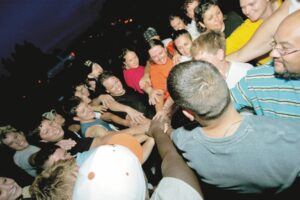 Players and coaches huddle up at the end of a practice before the season opener against the Los Angeles Amazons.
Xavier Mascareñas
Players and coaches huddle up at the end of a practice before the season opener against the Los Angeles Amazons.
Xavier Mascareñas
